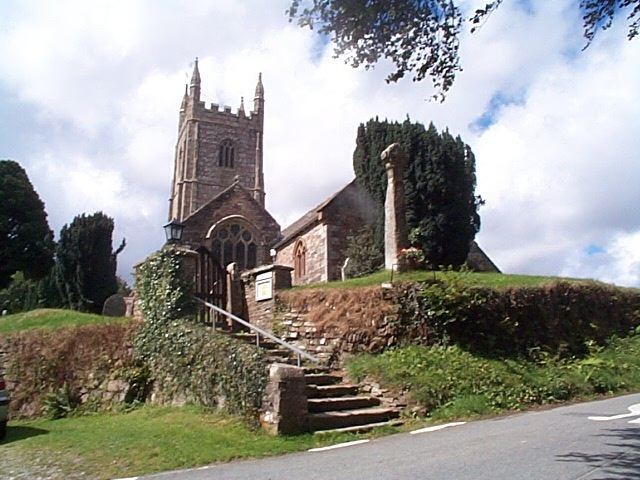OS grid reference SX122687 Dialling code 01208 | Civil parish Cardinham Local time Friday 2:04 AM | |
 | ||
Population 623 (Civil Parish, 2011) Weather 8°C, Wind E at 24 km/h, 93% Humidity | ||
Cardinham woods beast of bodmin mtb mountainbiking cornwall
Cardinham (Cornish: Kardhinan) (the spelling 'Cardynham' is almost obsolete) is a civil parish and a village in mid Cornwall, England, United Kingdom. The village is situated approximately three-and-a-half miles (6 km), east-northeast of Bodmin. The hamlets of Fletchersbridge, Millpool, Milltown, Mount, Old Cardinham Castle and Welltown are in the parish.
Contents
- Cardinham woods beast of bodmin mtb mountainbiking cornwall
- Map of Cardinham Bodmin UK
- Cardinham woods beast of bodmin blue run
- Early history
- Parish church
- China clay
- Notable residents
- References
Map of Cardinham, Bodmin, UK
Large areas which were once deciduous woodland are now plantations of conifers known as Cardinham Woods and managed by the Forestry Commission. Edmund John Glynn, of Glynn House in the parish, rebuilt the house at Glynn in 1805 (it has a front of nine bays and a portico).
Cardinham woods beast of bodmin blue run
Early history
Richard Fitz Turold (Thorold) was an Anglo-Norman landowner of the eleventh century, mentioned in the Domesday Survey. He had a castle at Cardinham, where he was a major tenant and steward of Robert of Mortain. The holding included the manor of Penhallam. His son was William Fitz Richard of Cardinham. Restormel Castle belonged to the Cardinhams in the 12th century, until Andrew de Cardinham's daughter married Thomas de Tracey. Cardinham Castle remained in the family (succeeded by the Dinhams) until the 14th century and later became a ruin. The manor of Cardinham is one of the few where the custom of Free Bench is recorded: by this a widow could retain tenure of the land until she remarried.
The Tenant-in-chief of the manor of Glynn as recorded in the Domesday Book (1086) was Robert, Count of Mortain; when it was one of several manors held by Osferth of Okehampton, County Devon, who had also held it before 1066 and paid tax for 1 virgate of land. There was land for 2 ploughs. There were 1 plough, 1 serf, 2 villeins, 6 smallholders, 100 acres of woodland, 40 acres of pasture, 4 unbroken mares, 2 cows, 24 sheep and 7 goats. The value of the manor was 10 shillings though it has formerly been worth £2 sterling.
Parish church
The parish church is dedicated to St Meubred: it has north and south aisles and a tower of granite. The chancel suffered bomb damage in World War II. Two freestanding Celtic crosses of stone, bearing inscriptions in Latin have been found in Cardinham; both had been embedded in the walls of the fifteenth-century church and were moved after their discovery to the churchyard. One has been dated to the fifth to eighth centuries, the other to the tenth or eleventh centuries: Arthur Langdon (1896) also records five other stone crosses in the parish. In the church is the brass of Thomas Awmarle, rector of Cardinham, d. 1401?
China clay
The former quarry of the Glynn Valley China Clay Works has closed down and is now flooded. It was in operation from the 1940s but since 2015 the site has been used for camping.
